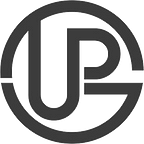A Green Home You Can Be Proud Of
When describing the efforts made by the Passive House Institute US (PHIUS), Alex Wilson (President of Resilient Design Institute) states “[Passive House] does one thing and it does one thing well.” That one thing is energy efficient architecture. In the past, homes have been built for practicality and comfort rather than energy efficiency. In the United States, buildings are responsible for up to 40% of energy use and 10% of greenhouse gas emissions (GHGs); contributing to the depletion of both the ozone layer and non-renewable resources. With the growth of public awareness regarding GHGs and their effect on climate change, interest in energy efficiency has surfaced. When Katrin Klingenberg, a German architect, built the first passive house in the United States in 2002, an option was introduced to satisfy American’s new desire to build energy efficient homes.
The Passive House Institute US (PHIUS) was established in 2007 as an extension of Klingenberg’s nonprofit eco lab project to help provide affordable, energy efficient housing in the United States. PHIUS provides a platform to learn more about the benefits of passive house building, find PHIUS certified contractors, and avenues to become certified as a builder. This voluntary approach to home construction follows the energy standard in Germany where the first passive house structure was built in 1990. These standards can reduce energy use up to 90% in each home, and they do not require the use of non-renewable resources. Currently, other incentivized programs for building new homes include EPA supported Energy Star whose efficient houses save only about 30% of energy in comparison. A home made by passive house standards is built much like a coffee thermos. It is very well insulated, utilizing solar energy to manage a comfortable temperature. The structure includes very thick exterior walls, special imported windows, and twice the insulation as a typical house, with a mechanical ventilation system that maintains air quality and temperatures. Building a home to passive standards is pricey, however, once built it will cost very little, if anything, to energize. Since its inception, PHIUS has had 130 projects in North America, trained more than 1700 architects, and inspired interest in these voluntary energy efficient standards. PHIUS also holds the annual North American Passive House Conference, the next will be held in Chicago in September, 2015.
As climate issues are looming and provoking serious changes, passive house measures are gaining popularity in North America. Voluntary measures could become standards in some regions such as California where climate changes are rapidly becoming noticeable. With commercial prospects on the horizon, high energy efficient housing could one day be available to a larger portion of the population. Habitat for Humanity has even partnered with PHIUS and recently built row houses in Washington D.C. with plans to build more. These homes will be available to low income families and require very little to no cost to energize. The future of home construction is in energy efficiency, and PHIUS is at the forefront.
—
Looking to discover more impact ventures? Join us at www.groundupproject.net
